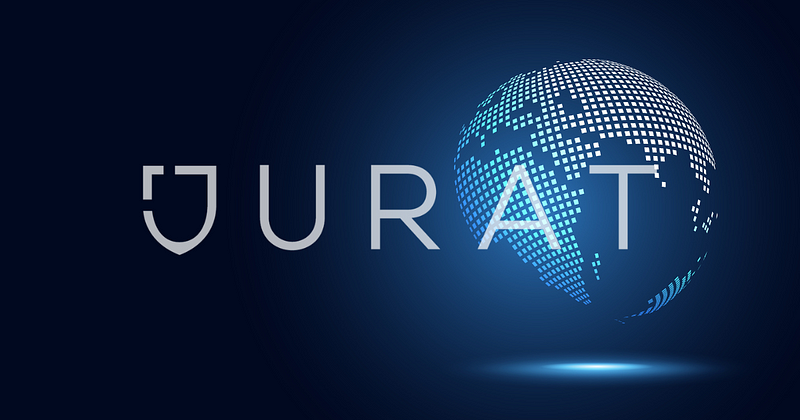What’s worse than losing your money to a bear (market)? It’s got to be losing your money to North Korea.
2022 marked the year of a downward market and an increase in on-chain crime by scammers, hackers, and state organizations. With markets coming off a supply of stimulus checks, consumer spending, and low interest rates, bad actors saw an opportunity and took it — exploiting billions of dollars from users around the world as markets crashed. This served as a teaching moment for many about using security options on-chain.
For Jurat, we studied what went wrong and how to fix it — becoming inspired to build products that protect users and provide legal recourse on-chain. So let’s break down exactly what happened and how we can create a safer Web3 environment for all.
Illicit cryptocurrency transactions mounted to $20.6 billion in 2022, hitting an all-time high. This includes stolen funds from crypto users, dark web exchanges, cryptocurrency mixers, and attacks on major DeFi platforms. According to the Chainalysis Crypto Crime Report — the source of all statistics in this article — 43% of illicit transactions also involved individuals/groups sanctioned by the Office of Foreign Assets Control (OFAC). Representing how a relatively small number of bad actors were committing a large percentage of the crimes on-chain.
Criminals used many methods to achieve their exploits. The highest paying was hacking, with $3.8 billion in assets stolen. This was followed by scamming, phishing, and ransomware. The main targets were DeFi protocols, accounting for 82.1% of all crypto stolen. With large sums stored in smart contracts, the prize pool is a worthy challenge for any hacker. In some cases, it only takes finding a few lines of flawed code to reap the treasures — a massive payday for smart criminal minds.
North Korea, with its government-sponsored hacking teams, saw this opportunity and took action, becoming a significant threat to our civil democracy and the freedom of users to safely transact on-chain. The country is estimated to have stolen roughly $1.7 billion worth of assets in 2022, with most of these thefts going to fund their nuclear program — an obvious security risk to all.
As blockchain becomes more prevalent in our daily lives, it’s crucial we continue to not only expose these criminals but provide recourse for victims. The latter being the core mission of Jurat.
With a similar mission to Chainalysis, Jurat seeks to make blockchains governable so that crypto owners and law enforcement officials can enforce their legal rights. JTC is a consumer protection version of Bitcoin, which provides recourse in the event of scams, hacks, or loss of private keys by offering legal solutions on-chain. This technology works and we recently have seen it in action.
A federal court case, entitled The JuratBTC Blockchain v. Andreyev, et al., 1:23-cv00779 (N.D.Ill.), demonstrates the potential for on-chain enforcement technologies to thwart illicit transactions on chain. In that case, individual miners operating the blockchain brought suit against 16 international criminals who had been sanctioned by OFAC pursuant to Executive Orders. The defendants included the cryptocurrency mixer Blender.IO (used by the notorious cyber-crime organization Lazarus Group), Anton Andreyev (a Russian hacker who worked to interfere in American elections), and Jiadong Lee, aka “Blackjack1987” (a member of a crime ring that laundered over $100mm in cryptocurrency stolen by North Korean hackers), among others.
The miners sought to freeze these Defendants’ accounts so that the blockchain would remain compliant with U.S. sanctions laws. The miners were able to bring the suit and the court was able to freeze the accounts because the JuratBTC blockchain connects directly with courts and can automatically execute orders.
This court connectivity means the days of hackers stealing coins are ending — courts can now grant relief that returns the stolen coins to the true owners. Just as Jurat miners filed a suit to freeze assets of North Korean hackers, any user can sue to freeze and retrieve stolen assets back to their wallet.
Just imagine the possibility for cryptocurrency adoption if your digital assets could be protected on-chain just as your house, car, or savings are protected. While there is still a long way to go for implementing this technology across Web3 products, its promises, in collaboration with on-chain analysis companies and government agencies, serve to provide crypt owners with effective access to the same legal rights enjoyed by businesses off-chain and pave the way for safe adoption of traditional commerce into the world of Web3.
To learn more Web3’s future and become involved in our community, please visit Jurat.io
Get a copy of the 2023 Chainalysis Crypto Crime Report at https://go.chainalysis.com/2023-crypto-crime-report.html



